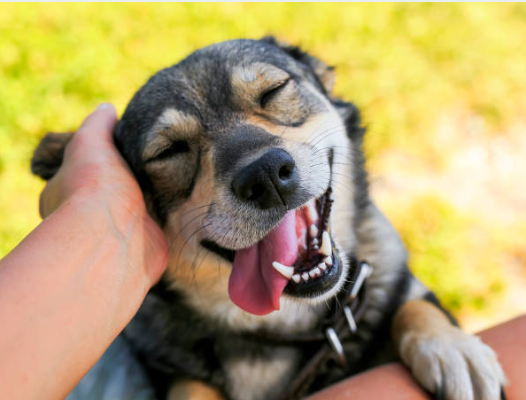Dogs communicate with us every day through their body language, but understanding what they’re trying to tell us requires some observation and knowledge. By learning to interpret your dog’s body language, you can better understand their needs, emotions, and intentions, leading to a stronger bond and a happier, healthier relationship.
1. Tail Wagging: The Language of Emotion
Tail wagging is one of the most recognized forms of dog communication, but not all tail wags mean the same thing. The position, speed, and movement of the tail can convey a range of emotions from happiness to anxiety.
What It Means:
- High and Wagging: A high, wagging tail typically indicates excitement, confidence, or alertness.
- Low and Wagging: A low wag can signify submission, insecurity, or nervousness.
- Stiff and Wagging: A stiff wag with slow movements may indicate a dog is feeling threatened or is preparing to react.
Pro Tips:
- Observe the rest of your dog’s body language (ears, posture) to get a fuller picture of their emotions.
- A wagging tail doesn’t always mean a dog is friendly; always approach unfamiliar dogs with caution.
2. Ear Position: Listening to Their Mood
Your dog’s ears are highly expressive and can give you clues about how they’re feeling. The position and movement of their ears can signal everything from curiosity to fear.
What It Means:
- Erect Ears: When your dog’s ears are upright and forward, they’re likely alert, curious, or focused on something.
- Pinned Back Ears: Ears held back against the head often indicate fear, submission, or anxiety.
- Neutral Ears: Ears in a relaxed, natural position suggest that your dog is calm and comfortable.
Pro Tips:
- Consider your dog’s breed when interpreting ear positions; for example, breeds with naturally floppy ears may show emotions differently.
- Use ear position in conjunction with other body language cues to accurately interpret your dog’s mood.
3. Eye Contact: Windows to the Soul
Your dog’s eyes can reveal a lot about their emotional state. From wide-eyed excitement to narrowed eyes of concern, understanding your dog’s eye language can help you respond appropriately to their needs.
What It Means:
- Wide Eyes: Wide, open eyes often indicate excitement or curiosity but can also signal fear or surprise, depending on the context.
- Squinting Eyes: A relaxed squint typically shows that your dog is content, while narrowed eyes can indicate discomfort, pain, or fear.
- Avoiding Eye Contact: Dogs that avoid eye contact may be showing submission or discomfort.
Pro Tips:
- Maintain soft, gentle eye contact with your dog to build trust and reassurance.
- Avoid direct staring, as it can be perceived as a challenge or threat.
4. Body Posture: Reading the Whole Picture
Your dog’s overall body posture can tell you whether they’re feeling relaxed, playful, defensive, or threatened. Paying attention to how they carry themselves can help you understand what they’re experiencing in the moment.
What It Means:
- Relaxed Posture: A dog with a loose, relaxed body is likely feeling calm and comfortable. They may have a slight wag in their tail, a neutral ear position, and a soft expression.
- Play Bow: A dog that lowers their front end while keeping their rear in the air is inviting play. This posture is typically accompanied by a wagging tail and excited expression.
- Stiff or Tense Posture: A stiff body, with weight shifted forward or backward, can indicate that a dog is feeling threatened, defensive, or ready to react.
Pro Tips:
- Be mindful of your dog’s posture when interacting with other dogs or people; it can help you anticipate their reactions.
- Encourage relaxed, calm body language by creating a peaceful environment and using positive reinforcement.
Understanding your dog’s body language is key to strengthening your bond and ensuring their well-being. By paying attention to their tail, ears, eyes, and posture, you can better interpret their emotions and respond to their needs, leading to a happier and more harmonious relationship.






